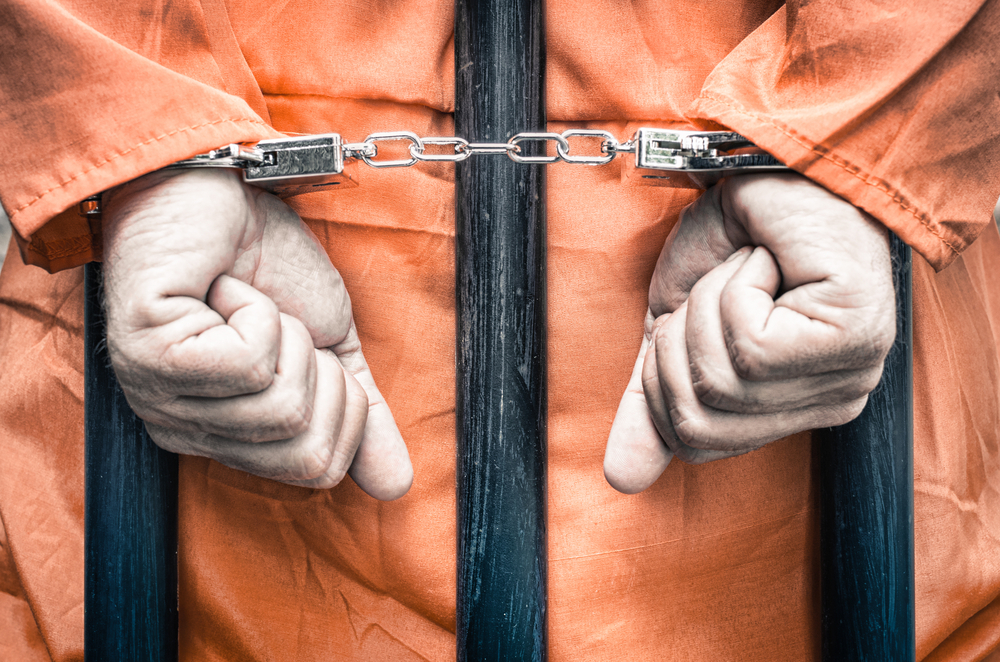Kingpin runners. Even standing alone the term commands attention. But the full breadth of what kingpin runners mean to fraud operations isn't always clear to outsiders.
As an attorney whose firm concentrates on investigating, litigating and preventing fraud whenever possible, for more than 20 years the practice has focused on Personal Injury Protection (PIP) and Bodily Injury (BI) fraud primarily as it relates to staged automobile accidents.
There were stories about kingpin runners. Others involved in their scams shared some details, so there was a general idea of how these fraudulent operations worked. But a kingpin runner has never provided me with a detailed, blow-by-blow account of how these schemes actually came together and operated – primarily because the kingpins either simply refused to speak during their incarceration or because they asserted their Fifth Amendment rights against self-incrimination.
That is, not until this year when our team was deposing dozens of individuals who had been arrested, convicted and incarcerated. Learning how extensive and detailed these criminal operatives are was surprising.
What are kingpin runners?
Kingpin runners are not the average run-of-the-mill criminals. They're smart and proactive; the type of masterminds who are able to put the “organized” in organized crime.
Many times, clinics will recruit kingpin runners who are able to bring in hundreds of new “patients,” a majority of whom claim fake injuries from staged “accidents.” In other cases, it is the kingpin runners who seek out clinics that are willing to accept staged accident patients in exchange for a healthy cut of insurance payments.
In either scenario, the kingpin runners are the ones in charge of overseeing the entire staged accident operation from start to finish. They become researchers, teachers and coaches, recruiting subordinate “runners,” setting agendas, laying out plans, and directing day-to-day operations.
Once they have identified fraudulent clinics and established working relationships with their owners, the kingpin runners or their subordinates typically reach out to family, friends, and friends of family to recruit people in need of cash to serve as staged accident “victims.” The kingpins then vet each participant, negotiate how much the clinic and each “victim” will be paid, and outline how, when and where the “accident” will be staged.
In scenes not dissimilar to business meetings, kingpins may host educational sessions, sometimes at a local hotel meeting room, bar, restaurant…even a hair salon. During what could be the run-through for a theatrical performance, accident scenarios are laid out and participants learn and practice what they are to do and say before, during and after their “accident.”
Often during these rehearsals, kingpin runners will ask participants about their insurance carriers. They're looking for “victims” who have policies with insurance companies most willing to settle and quickly pay out claims. Those participants typically will be “at fault,” while the others are coached on how to feign soft tissue, neck and back injuries.
Once the accident has been staged, the kingpin runners ensure no “victims” receive treatment at the scene or are taken to hospitals. Instead, they discover their “injuries” after the fact and are brought to participating clinics where kingpins can oversee every aspect of the paper trail, from the initial police report to the insurance payout. Once a claim is paid, the kingpin takes charge of the money and distributes it to all participants.
In layman's terms, these kingpin runners are the ultimate project directors.

Photo: Joseph Sohm/Shutterstock
Investigating fraud operations
Some attorneys, on behalf of their clients, have made an effort to find better ways to combat and prevent automobile insurance fraud. My team recently visited federal prisons, where we had an opportunity to depose and take the sworn statements of several sophisticated criminals with the contacts and knowledge to pull off major staged accident schemes.
Some refused to speak, some asserted their Fifth Amendment rights, and others have fled to Cuba where they are untouchable by U.S. authorities, at least for now. But a few of these kingpin runners surprisingly spoke about fraud rings in a very relaxed manner, revealing their secrets.
They provided a complete roadmap of their schemes – from recruiting crash “victims” and staging accidents, to targeting and collecting from passive insurance companies.
While each fraud scheme might include 40-50 people, only one or two were sophisticated criminals. The others were bit players in the fraud or scripted “accident” victims. But the ring leaders – the kingpins – would draft an effective business plan tailored to each staged accident.
Then they would diagram their accidents and have a playbook of sorts for every “victim.” It was almost like these kingpins saw themselves as the coaches of sports teams.
Some even kept “little black books,” their ledgers which contained everything from insurance company analyses; names, addresses and money paid to their scam participants; and different scenarios for the perfect “fraud;” to maps of the best places and the best times for staging their accidents.
Everything they needed to successfully bilk carriers through fraudulent claims. The process actually is a relatively simple one, but many of the “black books” kept by these kingpin runners contained all the elements of a good mystery novel.

Photo: Photographee.eu/Shutterstock
A look inside one fraud ring
Among the fraud specialists who agreed to speak freely about the operations was a clinic owner we will call “Javier.” He was busted during a recent large-scale fraud operation that involved a major multi-year, multi-million dollar probe by law enforcement into staged auto accident fraud. Javier pled guilty, and is now serving time in a federal penitentiary.
“Javier” came to the United States from Cuba in 1997 with no formal education. In fact, he never even graduated from high school. He spent years working in construction, as a laborer, truck driver and metalworker. Then suddenly, Javier was the de facto (i.e., actual) owner of a money-making healthcare clinic.
How was that transition possible? It started when a kingpin, actually his former teacher in Cuba, asked him if he'd like to leave all that behind and get into the medical business.
Naturally, Javier said, “Yes. Absolutely!”
Javier visited a community some 60 miles north of where he lived and was told he now was the owner of a clinic, although the kingpin would be his “boss.” The kingpin runner literally taught Javier everything he needed to know to operate the clinic.
In fact, Javier knew the business so well he could pass for having been in the profession for years. That's how most members of fraud rings gain their knowledge; it's handed down from the kingpins.
To prosper financially, rings need lots of “victims.” Consequently, most kingpins don't need to keep their recruits “close” in order to avoid snitching. The lure of fast money does that along with the knowledge that participants understand they too are breaking the law and likely will be imprisoned if they speak up.
The one consistent element in every operation is the recruitment of participants who are financially strapped; people for whom money means the difference between barely surviving and being able to live the American dream. Javier knew many of those people.
Once Javier's clinic received a check for treating accident victims – whether legitimate or not – it was deposited in the bank and a new check written for cash. The cash was given to the kingpin who would take out his and the clinic's cuts, and give the rest to his underling runners to pay off all of the victims.
To get around Florida law that every clinic must be owned by a licensed physician, the paperwork for Javier's clinic was filed under the name of a medical doctor. However, Javier proudly told those who asked that Dr. “X” never was involved with clinic operations and that he and his wife were the actual owners.
According to Javier, every patient who came into his clinic received illegal payments, even the one in every 100 claimants who had legitimately been injured in a real accident. When pointedly asked, “Did anyone not get paid?” His answer was always a resounding, “No.”
From his answer, it was evident the fraud extends beyond just the fake “victims.”

Photo: View Apart/Shutterstock
What fraud operators fear
Fraud tends to wither in the light of day. Ring operators don't like anything that exposes their operation as criminal. Sworn statements can unnerve participants and may keep clinics in check.
Ongoing surveillance provides license plate numbers and a list of who is going in and out of a clinic on certain days. That enables insurance companies to cross-check victims' claims of visiting a clinic for treatment when they actually did not.
Something that simple can start eroding a fraud ring. Criminals don't want even a tiny piece of the puzzle to be cracked. They know that one false move can cause the entire scheme to crumble.
Fighting back
The game plan the insurance industry should follow is to become a little more proactive and be visible about it.
Kingpin runners are closely watching what is going on in the insurance sector. According to the players themselves who are speaking out, simply closing their eyes and paying claims, as some carriers do, and thinking the problem eventually will go away doesn't work.
Insurance companies don't have to go after fraud operations 24/7; they just need to do something. Initiate random surveillance. Take a few sworn statements from “victims.” Set a couple of key depositions. Study the medical records and accidents for indications of irregularities or fraud. Find and speak to former employees. Those activities can be immense deterrents to fraudsters.
Some of the fraudulent operations that were ultimately shut down had been active for as long as 10 years. It wasn't until insurance companies started doing surveillance and deposing “victims” that cracks started to appear in the operations and law enforcement was able to indict kingpins and bring the schemes down.
Inaction is not an option
From the firm's representation of insurance companies in fraud cases, we know staged auto accidents cost the industry and its customers hundreds of millions of dollars each year. These recent kingpin runner depositions reinforced the belief that this is an issue that not only won't soon go away, but will likely continue to grow.
While these deposed kingpin runners are behind bars, others are already taking their places and they may have their sights set on specific insurance carriers. There is no time to sit back and relax. The fraudsters won't and insurance companies can't either.
When kingpin runners discover a weakness, they are quick to exploit it. If there is little or no resistance, they will exploit it over and over again. The best way to slow the onslaught is to make things more difficult and disrupt their plans by taking all the “easy money” off the table. A strong, unified front helps to reinforce this effort.
During the outset of the American Revolution, Benjamin Franklin proclaimed:“We must all hang together, or assuredly we shall all hang separately.” It was true then and it is true now as the insurance industry faces ever-evolving threats from sophisticated fraud rings.
To even stand a chance, companies must be vigilant and proactive. Take the fight to kingpin runners whenever possible. Maybe, they will think twice before scamming that insurance carrier again.
Frank S. Goldstein, Esq., is the founder and managing partner of Goldstein Law Group, a premier AV-rated law firm concentrating on the investigation, detection and litigation of fraudulent insurance claims. The firm's practice areas include auto, property and healthcare insurance fraud. Goldstein concentrates on the civil prosecution of insurance fraud claims and defense of insurance matters, including personal-injury protection, bodily injury and uninsured/underinsured motorist claims.
Want to continue reading?
Become a Free PropertyCasualty360 Digital Reader
Your access to unlimited PropertyCasualty360 content isn’t changing.
Once you are an ALM digital member, you’ll receive:
- Breaking insurance news and analysis, on-site and via our newsletters and custom alerts
- Weekly Insurance Speak podcast featuring exclusive interviews with industry leaders
- Educational webcasts, white papers, and ebooks from industry thought leaders
- Critical converage of the employee benefits and financial advisory markets on our other ALM sites, BenefitsPRO and ThinkAdvisor
Already have an account? Sign In Now
© 2024 ALM Global, LLC, All Rights Reserved. Request academic re-use from www.copyright.com. All other uses, submit a request to [email protected]. For more information visit Asset & Logo Licensing.








